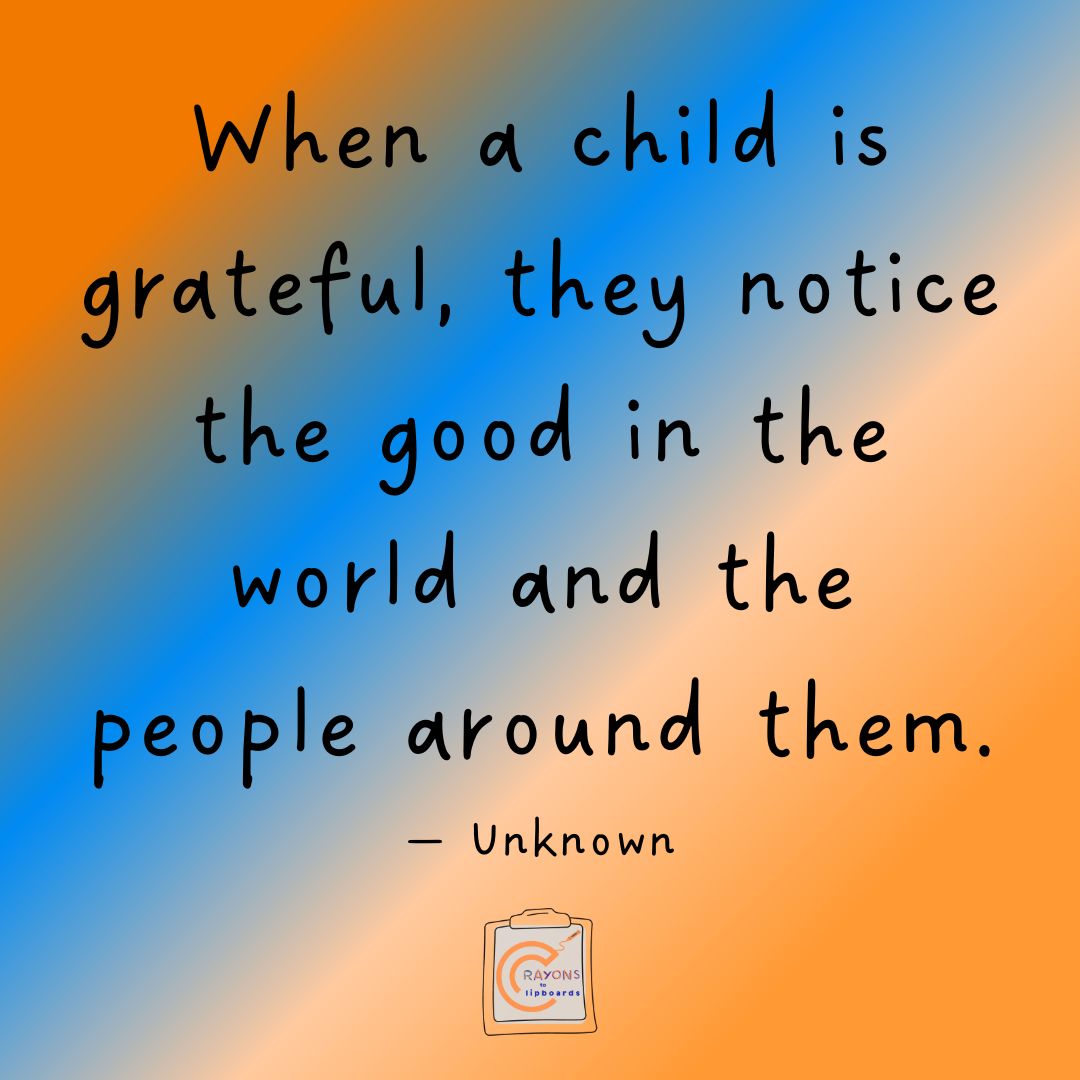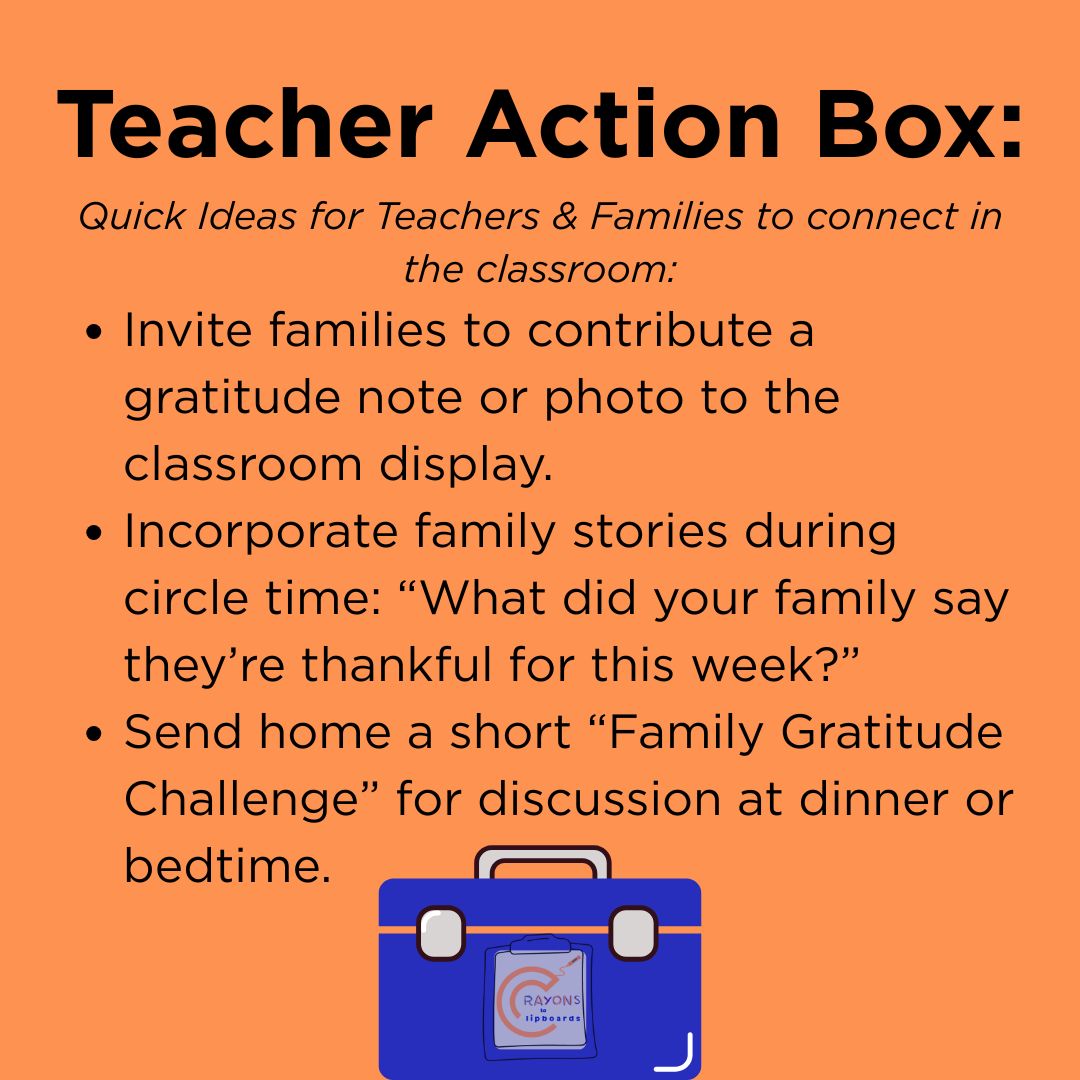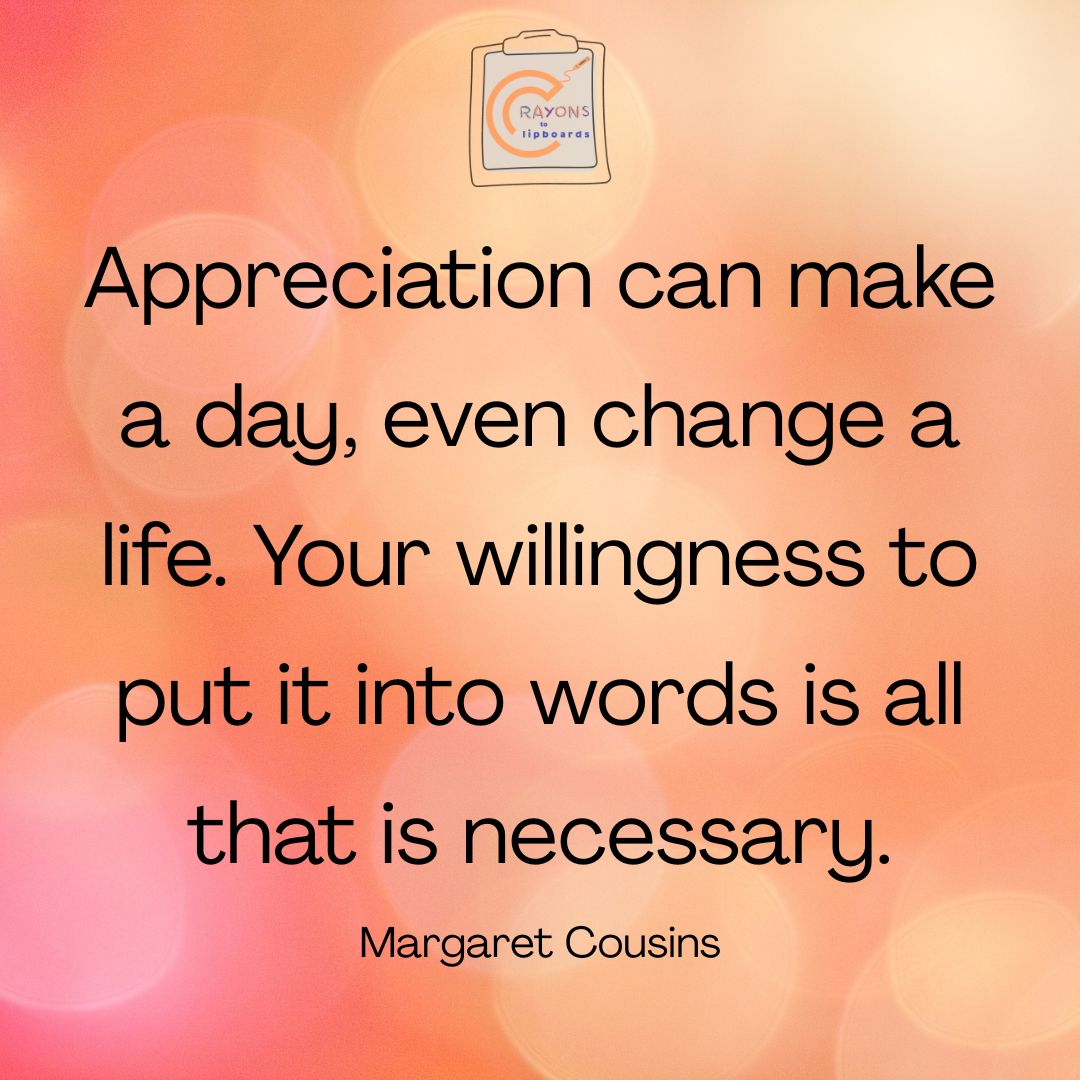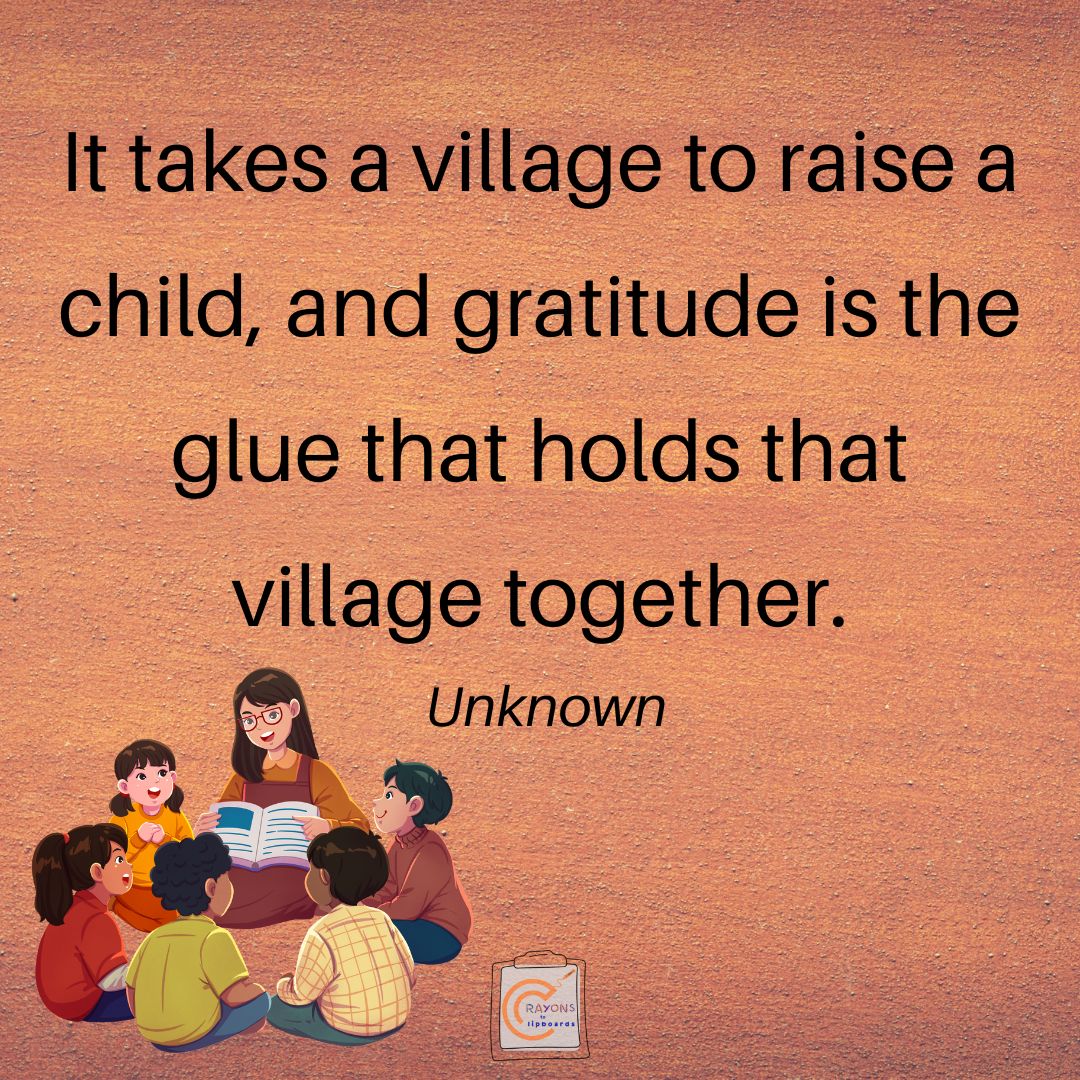- Crayons to Clipboards
- Posts
- Engaging Families in Gratitude
Engaging Families in Gratitude
How Families and Schools Can Foster Thankfulness Together
Welcome😊🖍️
As we continue our gratitude journey, engaging families is a vital step in creating a culture of thankfulness that extends beyond the classroom. When children see gratitude practiced both at school and at home, it reinforces positive social-emotional habits, strengthens relationships, and deepens the sense of community.
Families are powerful partners in modeling appreciation, reflecting on everyday joys, and sharing meaningful moments with their children. By intentionally connecting school and home, we can make gratitude a shared experience for children, teachers, and families alike.
Why Family Engagement Matters:
Reinforces Learning at Home: Children absorb what they experience in school; when families participate, gratitude becomes part of daily life.
Strengthens Relationships: Positive interactions between families and teachers build trust and collaboration.
Models Social-Emotional Skills: Children learn empathy, kindness, and thankfulness by observing adults in both settings.
Fosters Community: Sharing gratitude across home and school creates a connected, supportive environment.

The Home–School Connection: The Teacher’s Role
The teacher’s role is to act as a bridge between home and school, helping families see how simple, intentional moments of gratitude can shape a child’s mindset.
🤔Why it matters:
Teachers create the tone for connection. When families sense appreciation and open communication from their child’s teacher, they are more likely to mirror that positivity at home.
Gratitude-centered communication; a quick “thank you for your partnership” or “your child shared something kind today”, reminds families they’re part of a team working together for their child’s growth.
Small gestures, like sending home a “gratitude reflection card” or sharing a classroom “Thankful Tree” photo, strengthen that bridge and invite families into the classroom culture.
How teachers can foster the connection:
Invite families to contribute gratitude ideas, notes, or photos from home to display in the classroom.
Incorporate family stories during circle time or morning meetings (“What did your family say they’re thankful for this week?”).
Use family conferences or newsletters as opportunities to highlight and celebrate acts of kindness and appreciation.

Leadership in Action🎬:
💪🏽Empower Teachers: Equip staff with simple, ready-to-use tools to engage families; gratitude jars, reflection prompts, or family gratitude challenges.
🥳Recognize and Celebrate: Highlight teacher–family collaborations in newsletters, bulletin boards, or social posts to model gratitude in action.
🪞Reflect Together: Use family engagement moments (like gratitude notes or shared projects) as data points during staff reflections to assess program climate and celebrate growth.
🗣️Model at the Top: As a leader, show appreciation publicly: for teachers, families, and children. Gratitude that starts with leadership naturally ripples through every level of your program.

When families and educators come together to celebrate gratitude, we create a powerful sense of belonging and appreciation that children carry with them for life. Gratitude becomes more than a November theme; it becomes a shared language of connection, kindness, and joy that strengthens every relationship in our community.
Next week, we’ll close our gratitude series by exploring “Creating Gratitude as a Program Ritual”, turning these reflections and activities into lasting traditions that define our program culture all year long.

Till Next Time,
Jen Sprafka📋

Navigator of Leadership Development & Program Evaluation
P.S. If you're looking for a team-building activity, click here.
P.P.S. If you are having trouble creating an in-person family event focused on gratitude, I can help. Click here!

Reply